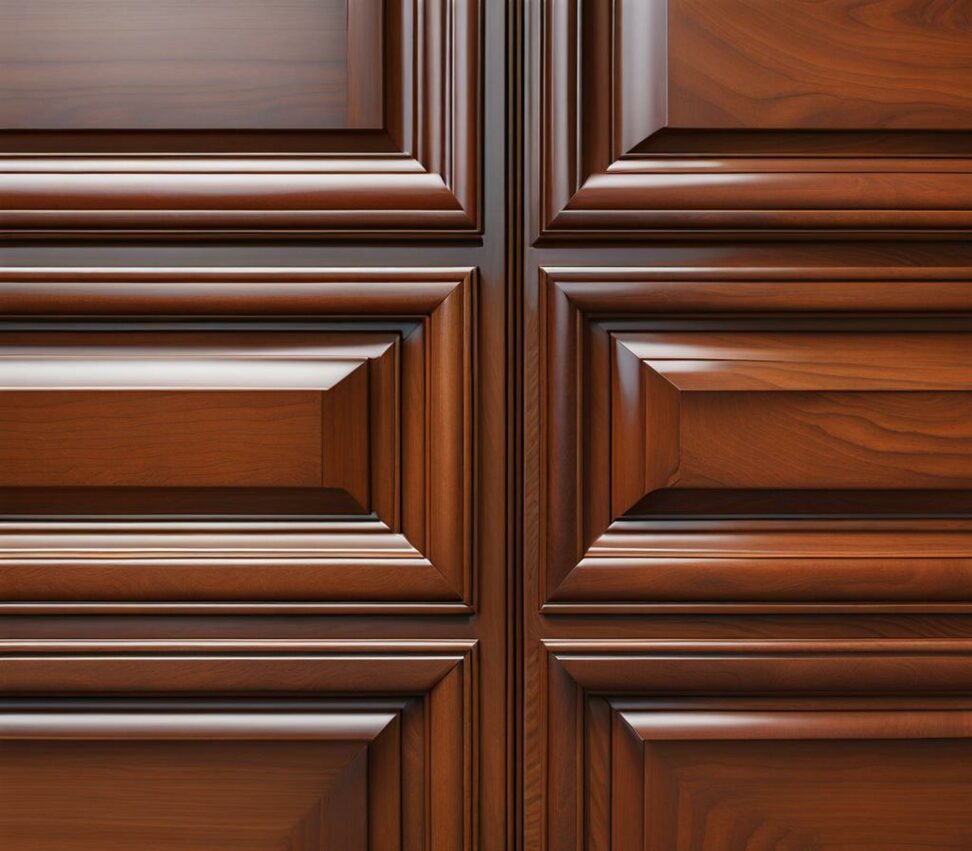How to Choose the Right Wood for Cabinet Painting
Transforming your kitchen with a fresh coat of paint on the cabinets can make a dramatic impact. But not all woods accept paint equally. The key to getting an ultra-smooth painted finish is choosing the right wood for cabinet painting.
Read on for tips that will help you achieve stunning, professional-looking results.
Tight Grain Woods Allow Paint to Adhere Evenly
The top criterion when choosing wood for painted cabinets is the grain pattern. Woods with a tighter grain--minimal pores and growth rings--take paint far better than open grain woods.

Paint adheres evenly to the smooth, tight surfaces of fine grain woods. This allows the paint to dry into a flawless, smooth coat. On open grain woods, paint tends to pool in the pores, resulting in an uneven finish.
Good fine grain wood choices for painted cabinets include maple, birch, poplar, alder, and high-quality MDF. Avoid open grain woods like oak, ash, mahogany, and walnut unless you plan to fill the pores extensively.
Opt for Affordable Paint-Grade Cabinet Woods
For painted cabinets, you don't need the most expensive, high-end wood. Many affordable paint-grade woods readily accept paint.
Soft maple, for example, is an economical option. It has a smooth, moderately closed grain that takes paint very well. The only downside is it may dent a bit easier than harder woods.
Poplar is another great choice that's easy on the wallet. It has a consistent, straight grain that provides an ideal surface for painted finishes. Poplar sands easily and doesn't absorb finish quickly.
Other budget-friendly paint woods are pine, alder, and MDF. Just take care prepping pine properly so knots don't bleed through paint.
Popular Paint-Grade Cabinet Wood Species
- Poplar
- Alder
- Maple
- Birch
- Pine
- MDF
Factor in Hardness to Assess Durability
The hardness of the wood species is another important consideration for long-lasting cabinets.
In general, hardwoods are more durable and dent-resistant than softwoods. For example, birch is exceptionally hard, while pine is quite soft and prone to dings.
With pine or poplar, take extra care prepping, priming, and painting to avoid marks. And accept that some minor dents over time are likely. Going with a harder wood like maple will minimize this issue.
Evaluate Cost and Availability
The cost and availability of various woods can also factor into your decision. While you may have your heart set on alder, if it's scarce in your area, it will drive up the price.
Consider choosing a cost-effective wood that's readily available in your region. Poplar and birch are very common cabinet woods that are usually easy to source and budget-friendly.
Just ensure your painter has experience working with the wood species you select. Some less common woods require specialized finishing skills.
Select a Sustainable, Eco-Friendly Wood
Today, many homeowners prioritize using ecologically sustainable wood for their kitchen cabinets. This helps reduce environmental impact.
Both domestic and imported hardwoods can be green choices. Birch, maple, and bamboo cabinetry are sustainable options that support responsible forestry practices.
Seeking out FSC-certified wood products ensures your cabinets come from forests that are responsibly managed and harvested.
Consider Moisture Resistance
Since kitchen cabinets endure moisture from spills, steam, and humidity, it's smart to choose a water-resistant wood.
Alder and birch both have natural moisture resistance that helps minimize swelling and warping. Their tight grains limit moisture penetration as well.
Using a moisture-blocking primer provides extra protection. And proper installation with complete sealing will also prevent moisture damage.
Prepare the Wood Properly for Optimal Paint Adhesion
While wood selection matters, proper prep and priming are also essential for painted cabinets. Taking steps to ensure the paint adheres tightly to the raw wood will prevent cracks and chips down the road.
Any wood surface needs to be thoroughly cleaned, sanded, and primed before painting. Softwoods like pine may require a wood conditioner or extra-gripping primer so paint doesn't get absorbed too quickly.
Prep work is also critical for open-grain woods, requiring every pore to be filled for a smooth painted finish. Your painter should have the specialized skills to prep your chosen wood correctly before applying cabinet paint.
Hire a Pro for Superior Results
While a DIY painted cabinet project is definitely achievable, hiring a professional painter is advisable for the highest quality outcome.
An experienced cabinet painter will know how to properly prep and apply paint for any wood species. They'll also have the right tools, like an HVLP sprayer, for a flawless factory-smooth finish.
Do your research to find a seasoned kitchen cabinet painter. Check reviews and photos of past projects to ensure they have expertise with your desired wood and paint application technique.
Choosing the right wood sets the stage for cabinet painting success. Opt for paint-friendly species with tight grains, like poplar, maple, and birch. Consider moisture resistance and hardness as well. With good prep and an expert painter, you can achieve a smooth, durable painted finish on your dream wood choice for a transformed kitchen.